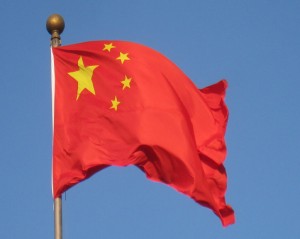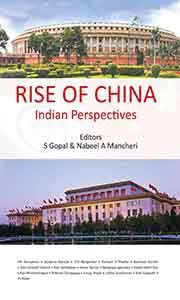Strategic Culture pertains to a people’s distinctive style of dealing with problems of national security. It is about how a nation, its decision-makers and citizens, together perceive a threat from another country or from violent non-state actors and their collective or shared beliefs about the nature of force to respond to an emergent situation. Evidently, a country’s Strategic Culture would broadly define the contours of its military culture and how it impacts other countries during war and peace.
US academic Jack Snyder conceptualised the term Strategic Culture in 1977 to study Soviet nuclear weapon behaviour as “the body of attitudes and beliefs that guides and circumscribes thought on strategic questions, influences the way strategic issues are formulated, and set the vocabulary and perceptual parameters of strategic debate.”
American academic Andrew Scobell in his book China’s Use of Military Force: Beyond the Great Wall and the Long March explains the concept of strategic culture as an amalgam of layers with political culture at the bottom, strategic culture forming the second, civil-military culture at the third layer, and finally the military’s organisation culture as the fourth layer on top.
Strategic culture enables one to comprehend the strategic intentions of a nation state, whether a nation tends to project offensive or defensive behaviour patterns, vis-a-vis other countries, better in the context of its culture and ethos. It is an important concept to comprehend the national security and foreign policy. Strategic culture is not immutable or static but conditioned by politico-military developments like military defeats, invasions, occupations, radically new political systems,
US academic Alstair Iain Johnston in his book Cultural Realism defines “Strategic Culture” as “ranked grand strategic preferences derived from central paradigmatic assumptions about the nature of conflict and the enemy, and collectively shared by decision makers.”
The PRC traditional strategic thinking in the form of ‘People’s War’ and its philosophical antecedents may not at first sight appear relevant to contemporary China’s security requirements. However, considering cultures do not change dramatically over time, especially a culture as old and complex as China, there is bound to be an element of continuity between the past and the present. China’s emphasis on safeguarding its territorial integrity flows naturally from its geography, history and culture. The PRC is a continental power that shares borders with 14 countries, four of which namely Russia, India, Pakistan and North Korea possess nuclear weapons. Most threatening to China in the past two centuries have been the land-based invasions by Russia and Japan, through Mongolia and Manchuria respectively.
Historically, Chinese scholars have argued that China’s wars were inherently just and defensive. Approximately the 3,700 to 4,000 wars that China has fought over 4,000 years of dynastic rule were civil wars or wars to unify the country. Similarly, the Ming dynasty’s Admiral Zheng He’s fleets visited Arabia, Brunei, East Africa, India and South East Asia but never attempted conquest of foreign territories. But all of the eight military actions that China has fought since 1949 were fought in self-defence.
Chinese culture is associated with Confucius who’s thinking that “Peace is precious” is also reflected in the country’s Strategic Culture. Viewing Chinese strategic thinking through Confucian tradition dictated that China tends to favour harmony over conflict and defence over offense. On the other hand, Chinese strategic thinker Sun Zi’s classic work Art of War stresses a predisposition for stratagem over combat and psychological and symbolic warfare over head-to-head warfare on the battlefield.
In terms of Strategic Culture, a distinction would however, have to be made between ancient China, as a kingdom and modern China, post-1949 or the PRC — the revolutionary communist state. The PRC is a revolutionary regime and such States are inherently violent, aggressive and expansionist. A classic case in point was the PRCs military occupation of Tibet in the 1950s. The Chinese leadership under Mao enunciated the Five Finger Theory that Tibet is China’s palm and Nepal, Bhutan, Sikkim, Ladakh are its five fingers.
Clearly Chinese Strategic Culture therefore, comprises two strands — Confucian and Realpolitik — while the former is relevant to China as a kingdom, the latter is to modern China. The Realpolitik strand symbolises that war is central to inter-state relations. Chinese leaders like to engage in offensive military operations as a primary alternative in pursuit of national goals, while rationalising these actions as being purely defensive and a last resort. To interpret China’s international and domestic behaviour in the 21st century one needs to look beyond the Great Wall and Long March. How would China use military force in the future the post-Cold War strategic environment?
Some tenets of Chinese strategic culture are:
Man is Central but Technology is Crucial
The fact that China became a nuclear weapon power in October 1964 substantiates this thinking considering it had to cope with an altered strategic environment at the height of the Cold War. From the early 1950s until the mid-1970s, People’s War remained China’s military doctrine but the PLA’s force structure, however, which came to include nuclear weapons as well as artillery, combat aircraft, and tanks, did not really reflect Mao Tse Tung’s concept of People’s War. The significance of Strategic Culture in the Chinese context is evident from Mao’s statement “An army without culture is a dull-witted army and a dull-witted army cannot defeat the enemy.”
The PLA’s military defeat against Vietnam in 1979 made China review its military doctrines which resulted in a modified doctrine, strategy, and tactics under the rubric of ‘People’s War Under Modern Conditions’. This updated version of people’s war lacked a systematic definition, but it permitted Chinese military leaders to pay tribute to Mao’s military and revolutionary legacy while adapting military strategy and tactics to the needs of modern conventional and nuclear warfare.
If Someone Does Not Attack Us, We Will Not Attack Them
In a sense this principle suggests an element of continuity considering it adheres to Confucian thinking that “Peace is precious.” This is amply reflected in the nuclear doctrine that highlights ‘No First Use’.
Primacy of National Unification
The Chinese PLA’s role is among others to recover lost territories and this is where the risk of hot war is likely to occur between China and regional nations which share contiguous borders with her.
Heightened Threat Perceptions
The Chinese government tends to perceive threats everywhere and especially of the ideological nature considering it is among the sole authoritarian regimes that remain in the world. The biggest threat is perceived from democracy and this explains why the state-run television channels tend to show the chaotic side of democracy like agitations and protests whenever occasion arises. Indirectly they warn their citizens that such a fate can also befall them if they hanker after democracy.
The post-Mao period in Chinese strategic thinking was symbolised by Deng Xiaoping’s famous twenty-four character strategy: watch and observe calmly; secure our own position; behave with confidence and patience; hide our capacities and bide our time; be good at keeping a low profile; never play the leader. By 1987 changes in military organisation indicated the importance Chinese leaders attached to structural reform in building military forces capable of waging modern, combined arms warfare. These reforms included the creation of the state CMC parallel to the party CMC, reduction in force, reorganisation of military regions, formation of group armies, enactment of the new Military Service Law, and reorganisation of defence industries. Another noteworthy development during the Deng period in the context of Taiwan was the transition of Beijing’s national security and foreign policy from liberation by force to peaceful reunification. Broadly Deng’s policy was to support world peace because it suited China to do so because it had embarked on the four modernisations since 1976 and economic development comprised a major component.
China has fought eight wars in the post-1949 period beginning with the: Korean War (1950-53), Invasion of Tibet (1950), First Taiwan Straits crisis (1954), India-China border war (1962), Sino-Soviet border clashes (1969), Sino-Vietnam war (1979) and Second Taiwan Straits Crisis (1995-96).
However, China has since 1949 fought wars only on land — 1950 in the Korean Peninsula, 1962 across the Himalayas with India, 1969 at the Ussuri River with the USSR and 1979 with Vietnam across the mountains in the South. Chinese military experience suggests very little participation from the PLAAF and negligible involvement from the PLAN. As a result, the PLA proved the dominant military decision-maker. However since the mid-1970s, China has found the need to emphasise its maritime military capabilities owing to involvement in the South China Sea and intense competition for oceanic resources from the other island nations in the region.
This refers to China’s skirmishes in the last three decades over the Paracel Islands with Vietnam (1974); over the Spratly Islands with Vietnam (1988) and the Philippines (1994); with South Korea over Socotra Rock (2006); and with Japan over the Okinotori Islands (2004) and the Senkaku/Diaoyu Islands (2010).
Clearly the regional security environment has compelled China to evolve its military doctrine to factor in aerial and maritime warfare strategies, especially in the post-Mao period with the South China Sea gaining greater strategic significance. This has led to the concept of` ‘jointmanship’ or combined arms capabilities meant that during joint exercises various forces conducted separate tasks in proximity of each other. That has since changed. The first indications of a serious attempt at joint operations came in 2004, when the CMC inducted the Chiefs of the PLAAF and PLAN as members of the CMC. Soon thereafter budgetary allocations saw a quantum leap in favour of the PLAAF and PLAN which presently receive about 29 per cent each as compared to only 19 per cent for the Army.
China’s increasing energy needs underscore four questions about Beijing’s military posture and strategic intentions. How will China guarantee its most vital sources of energy supply, especially those that depend on the free flow of goods through international shipping routes? Does China possess the naval capability to secure SLOCs? Is such a capability at the centre of its future naval planning? Can China’s missile capabilities be used to intimidate international shipping? The link between China’s historic use of force and resource considerations is tenuous. The particular case of the South China Sea has been inflated by many analysts into a more significant case study of Chinese strategic behaviour than it actually merits. Chinese strategic interests in resource supply are not incompatible with US hegemony. Indeed, an American draw-down in the Pacific is a greater threat to the stability of Asia’s energy markets than any potential Chinese challenge to the status quo.
From an Indo-centric security perspective, an understanding of Chinese Strategic Culture assumes importance in the context of the unresolved border dispute between the two Asian neighbours. It would therefore be relevant to view the border dispute through the lens of Chinese Strategic Culture. Perhaps it would enable New Delhi to evolve a better understanding of the Chinese mindset conditioned by its history and philosophy.







A thought provoking article depicting the Distinct yet intertwining of the strategic cultural approaches of the medieval Chinese and the the PRC approach.
Understanding The PRC approach to Indian rise and ambitions need detailed study, by all those engaged in diplomacy and military. With the dragon at the gates, breathing fire,there is an urgent need.
Chengappas’ article is a welcome spotlight on the subject.